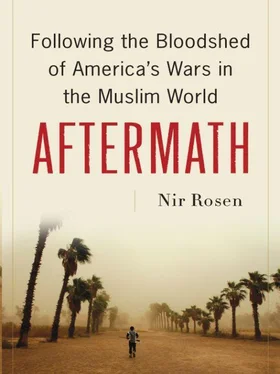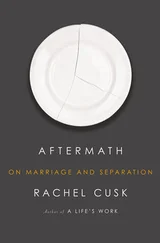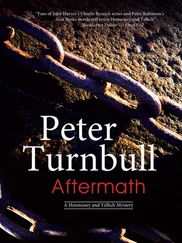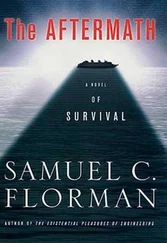On July 18, 2003, a day after the old Baath coup anniversary, more than a thousand men with white skullcaps gathered for the Friday prayer and sermon. Signs were still up displaying the mosque’s original name. An adjoining museum contained a Koran allegedly written with Saddam’s donated blood. That day, Dr. Harith al-Dhari, head of the Association of Muslim Scholars, warned that the Americans should think of leaving Iraq to spare them and the Iraqis time, blood, and money. “It is the right of occupied people to resist the occupiers . . . the Iraqis will resist,” Dhari said. Did the Arabs not have the same right to resist occupation and expel the occupiers that other nations had? The Americans had to leave at once, and the Iraqi people would establish their own government, unite, and live as brothers. Dhari commended the members of the resistance, calling them “an honest opposition” of which Iraqis could be proud. He called on them to continue defending Iraq and resisting the occupation.
Dhari condemned the Interim Governing Council, which, he claimed, had been established by “dishonest parties” and divided Iraq along sectarian lines. It would only cause hostility among the Iraqi people, he said. He was infuriated by the council’s declaration of April 9 as a national holiday, a day he described as “the downfall and surrender of Baghdad,” which should be commemorated with sorrow and pain. Dhari’s anti-Shiism came across obliquely, when he condemned the IGC for allowing one community (the Shiites) to dominate the others, despite statistics to the contrary (meaning he rejected claims that Shiites were the majority population in Iraq). Dhari also condemned exiled opposition leaders who came on the backs of U.S. tanks and called for killing former Baathists. Up to half the country’s population were former Baathists, he said, defending them as pious and well intentioned.
As his voice built to a piercing, shrill cry, Dhari screamed out about crimes the Americans were committing: breaking into homes, searching women. “Do you agree with this?” he demanded of the crowd. “No!” they shouted back. Dhari reminded his audience that the Iraqis knew how to resist occupation, recalling the 1920 revolution against the British, when Sunnis and Shiites had fought together. As prayers ended and the men streamed out of the mosque, their bellicose spirit continued with shouts of “No to colonialism!” “No to the occupiers!” The crowd chanted rhyming slogans calling for the extermination of the infidel army, for Baghdad to revolt, and for Paul Bremer to follow the fate of Nuri as-Said, the British-protected prime minister who was killed by mobs in 1958. Leaflets distributed during the demonstration contained a statement calling on Muslims around the world to come to their aid to confront the atheist occupying forces and to re-establish the Islamic caliphate to defeat the American and British aggression.
A few weeks later, on August 11, the Association of Muslim Scholars issued a statement condemning American violation of the mosques, which they said even the Mongols had not done. Iraq’s Islamic endowments were now being looted by criminals “from across the border,” meaning Shiites from Iran. The statement claimed that seventeen mosques had been robbed with the blessing of American forces. While acknowledging Grand Ayatollah Ali al-Sistani for his statements protecting Sunni mosques, they blamed the Americans for giving Shiites too much power, including control over the ministry of religious endowments. These Shiites did not protest the arrests of thirty clerics or the American violation of holy places.
The Rise of the Sadr Current
The Sadr Current, as its supporters describe it, was a surprise to all outside observers of Iraq and even most middle-and upper-class Iraqis, but there were clues in the 1990s that this was a growing movement. Following the Gulf War, many Iraqis fled to Saudi Arabia or surrendered to the Americans. In the refugee camps where they were housed, fighting erupted between supporters of the Sadr Current and the rival Supreme Council of Hakim. The Hakim family was perceived to represent the elite; it also backed Ayatollah Khomeini’s system of clerical rule, known as wilayat al-faqih . Although theological differences existed, the bitter rivalry between followers of Hakim and Sadr can best be seen as both a class conflict and a symptom of the resentment of Iraqi nationalist Shiites who stayed in Iraq toward Hakim and his followers, who were in exile in Iran.
The Sadrists are inspired by the example and teachings of Ayatollah Muhammad Baqir al-Sadr, arguably the most important Shiite theologian of the twentieth century, who challenged the quietist and traditional role of the Shiite clerical establishment, known as the hawza . He eventually confronted Saddam and was executed by him in 1980. His cousin Ayatollah Muhammad Sadiq al-Sadr inherited his mantle, building an immense following among poor Shiites. Much as the Iraqi Communists once exploited the revolutionary potential of poor Shiites, so too did the Sadrists. The Shiite masses were attracted to these movements not so much for their ideology but for their anger. The hawza had historically been dominated by the traditional Shiite view that religious leaders should eschew politics and focus on the spiritual world and on advising their flock. In the 1950s, however, responding to government oppression and encroaching Western secularist trends, a more activist brand of Shiism developed. The activist Shiites sometimes referred to themselves as the outspoken hawza , or the revolutionary hawza , or active faala , and they disparagingly viewed their introverted counterparts as the silent hawza .
In many ways the Sadrists are the subalterns of Iraq, part of the recurring phenomenon of Iraqi mass politics. The Sadrists rejected the obscure theological obsession of the establishment because they had little to do with the daily struggles of real people. Although Muhammad Sadiq al-Sadr was killed in 1999 along with his more prominent sons, his surviving son, Muqtada, along with Muhammad’s top students, Muhammad al-Yaqoubi and Kadhim al-Haeri, led the movement in the underground phase it assumed until 2003. The Sadrists viewed attendance at Friday prayers, and particularly the Friday sermon, as an act of defiance and revolution, the moment when followers gathered, often pouring in the thousands into the streets, as a powerful collective. The Sadrists were fierce Iraqi nationalists and Arab nationalists, even pro-Palestinian. They were not Persianized, unlike Dawa and the Supreme Council.
Muqtada, the populist upstart who inherited his father’s network of mosques and clerics, led the revolutionary class of poor Shiites. Educated and middle-class followers of his father split from him and joined the Fadhila movement, led by Yaqoubi. A dialectic developed between Muqtada and the angry masses: he followed them as much as they followed him. Soon the CIA would order its analysts to stop using the word “firebrand” every time they described him, and to find some variety.
Immediately after the war, Muqtada and his network seized control of the Shiite sections of Baghdad and much of the south, and to occupy hospitals, Baath Party headquarters, and government warehouses, establishing themselves as the state in much of Iraq. Sunnis were the primary victims of the murderous settling of scores that began on April 9, 2003. The killers were usually Kurds or Shiites. Thousands of Arab families were also expelled from areas in the north of Kirkuk and Diyala, which Kurdish militias perceived as part of their territory. After Baghdad fell, angry Shiite mobs in the newly named Sadr City slaughtered radical Sunni foreign fighters, even burning tires around their necks. Many Iraqis wanted revenge. These foreign fedayeen had been given weapons and the authority to control Baghdad’s streets before the war. In April 2003 I met with a Shiite young man whose ear was cut by a group of Arab mujahideen because they accused him of being a deserter. Just as frightening for Sunnis was the seizure of their mosques throughout Iraq. Following the 1991 Shiite intifada, Saddam ordered the construction of large Sunni mosques in Shiite-dominated cities throughout the south. These were often named “the Great Saddam Mosque.” Immediately after the regime collapsed, these and other Sunni mosques were occupied by Shiites.
Читать дальше











